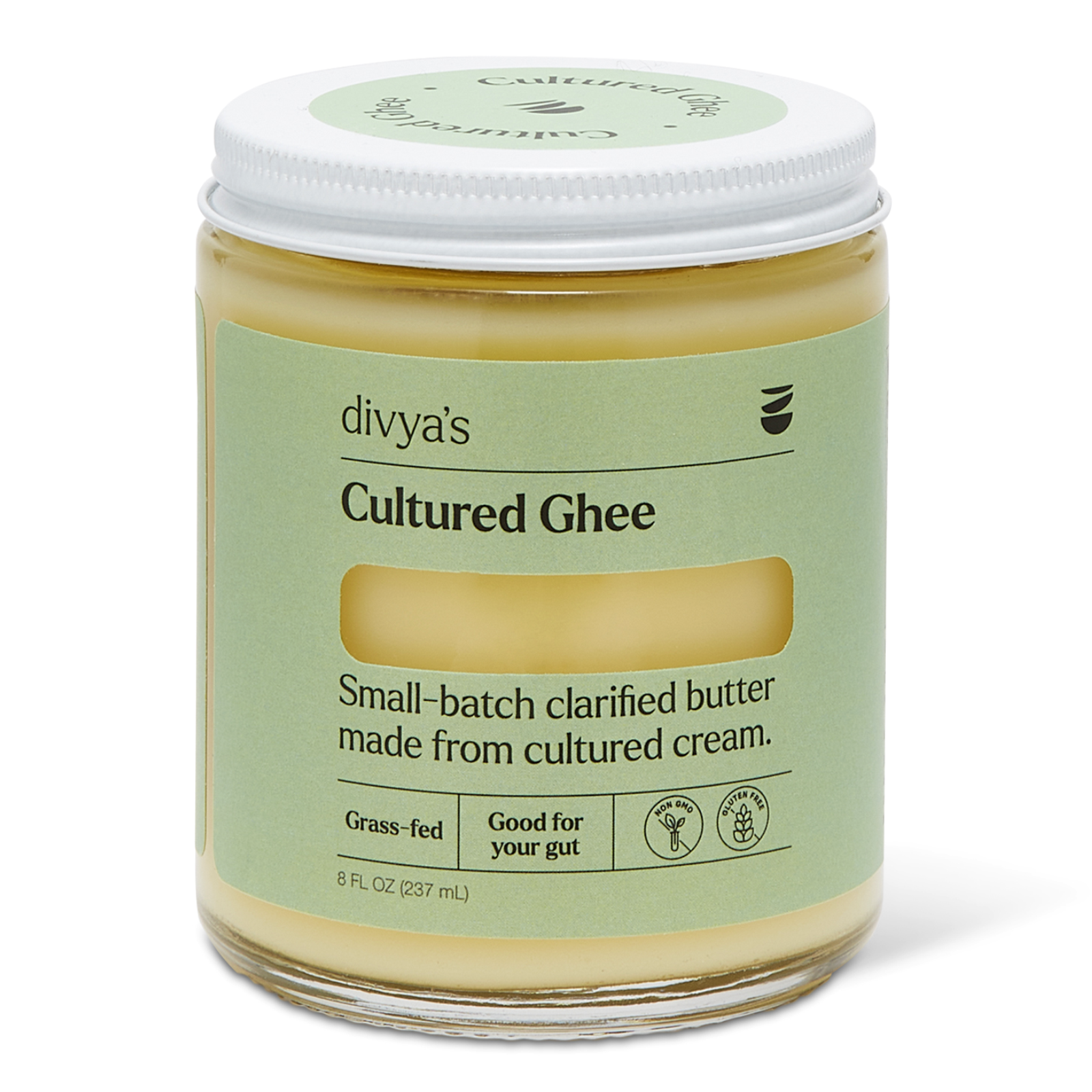An Ayurvedic Guide to Food Combining
Aug 08thIn this article, Divya introduces the essential Ayurvedic principle of food combining. She teaches us that it’s not enough to choose healthy ingredients. True health requires us to select quality ingredients that, when combined in a meal, support strong and balanced digestion.
- SHARE:
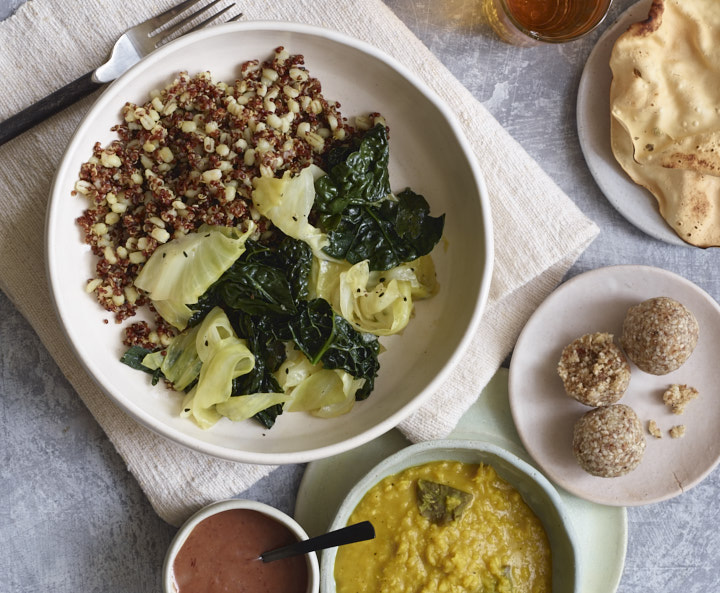
Photo c/o William and Susan Brinson
Why Food Combining Matters
(Adapted from Divya’s book What to Eat for How You Feel)
Imagine putting these people in a room together: an ambitious high achiever, a laid-back pacifist, a quiet daydreamer, a determined activist, and an unflinching pessimist. They may all be great people, but we can’t assemble them and expect a quiet conversation.
It’s the same with food. Every food is good for something, but sometimes eating two good foods together may result in them fighting in your stomach. To enjoy a healthy relationship with food, you have to learn how to mix and match properly.
Great chefs teach us how to match ingredients to layer friendly flavors and create stunning presentations, but if your goal is to make delicious food that you can digest without any problem, there are a few more key points to consider.
Following proper food combinations is especially important for the sick and weak and for those with chronic gut disorders. Mild digestive problems often result from eating conflicting foods, and so I’ve included a few example guidelines to help you improve your approach to food selection.
(If you’re interested in learning more about this topic, I cover it in greater detail in both of my cookbooks)
Examples of General Guidelines
Geographical location: It is important to eat foods appropriate for the climate and altitude you live in. Certain recipes may be good to prepare in some parts of the world but not in others. Countries and cultures include specific foods to support the population in that particular environment, and people from other cultures and climates may not be able to handle the same diet. For example, it would be incompatible to eat traditional South Indian (or any tropical) cuisine during winter in New York City.
Season: It is contradictory to eat dry and cold foods in the winter and sharp and heating foods in the summer. Consult the recipe chapters in What to Eat for How You Feel for help choosing seasonal foods.
Method of preparation: Undercooked, overcooked, or in some cases food cooked without spices has a negative effect on digestion; microwaving kills the life in the food; heating honey above 112oF makes it act as slow poison. These are just some examples.
Palatability: There is no need to force yourself into eating supposedly healthy food while telling yourself “I hate this” with every bite—this alone will cause indigestion. It is much better to enjoy foods that evoke happiness and gratitude.
Examples of Good Food Combinations
| Ingredient: | Compatible with: |
| Grains | All vegetables, milk, legumes and yogurt. |
| Legumes | Grains (especially when cooked with digestive spices), non-starchy vegetables (such as broccoli, cabbage, cauliflower, radish, and asparagus) and leafy greens (such as kale, collards, chard, spinach and lettuce). |
| Milk | Grains, sweet dried fruit (such as dates, soaked raisins), ghee and butter, nuts, spices like turmeric, ginger, pepper, cinnamon, cardamom, cloves, saffron and vanilla. |
| Meats | Light foods such as non-starchy vegetables, leafy greens, and salads. |
| Raw Fruits | Best eaten alone or in combination with other fruits of the same kind and same predominant taste (ex. berries, stone fruits and berries, apples and pears). A more complete list of raw fruit guidelines is provided in What to Eat for How You Feel. |
Examples of Bad Food Combinations
The classical Ayurvedic texts give a long list of incompatible foods that could take days to study. Here I’ve provided just a few examples of the most common bad combinations that lead to immediate indigestion.
Combinations that lead to immediate indigestion:
| Ingredient: | Not compatible with: |
| Milk | Salt, fresh fruit, and foods of predominantly sour taste (such as yogurt, cheese, citrus and tomatoes) |
| Raw Fruit | Dairy, cooked food, grains, legumes, salads or leafy greens. Pineapple and papaya are the exceptions and can be enjoyed with cooked food at lunch. |
| Cucumber | Lemon (because their prolonged “fight” in the stomach could lead to slowly accumulating toxins and calcification. Use lime instead) |
Resolving Culinary Cultural Confusion
There are many traditional recipes in different cultures of the world that call for mutually contradictory foods. If cheese and beans are a bad match, what do you make of Mexican cuisine? One way to resolve cultural culinary confusion is through the concept of homeostasis: our bodies are coded to do their best to maintain internal stability in order to survive, evolve, and thrive. They carry an intelligence that allows them to adjust and adapt in the face of challenging situations. If you repeatedly consume contradictory foods that do not cause an immediate reaction, your body will find ways to accept such a diet. However, it does come at a price. You may not experience discomfort right away but, in due course, depending on your body’s weak points, eating mutually contradictory foods may result in deep imbalance. People in every culture mix incompatible foods, but we also see prominent diseases in every culture.
You can reduce the negative effects of bad food combinations with the help of spices. Spices enhance metabolism and act as connecting links between ingredients. Even in small doses, spices help reawaken our digestive intelligence.
Going Deeper
The general guidelines and combinations that I’ve listed here are just a small sample of Ayurveda’s wisdom when it comes to improving digestion through proper food combinations. If you’re interested in learning more about these topics, as well as how to choose foods that support your individual body type, check out my new cookbook Joy of Balance.
Recommended Products
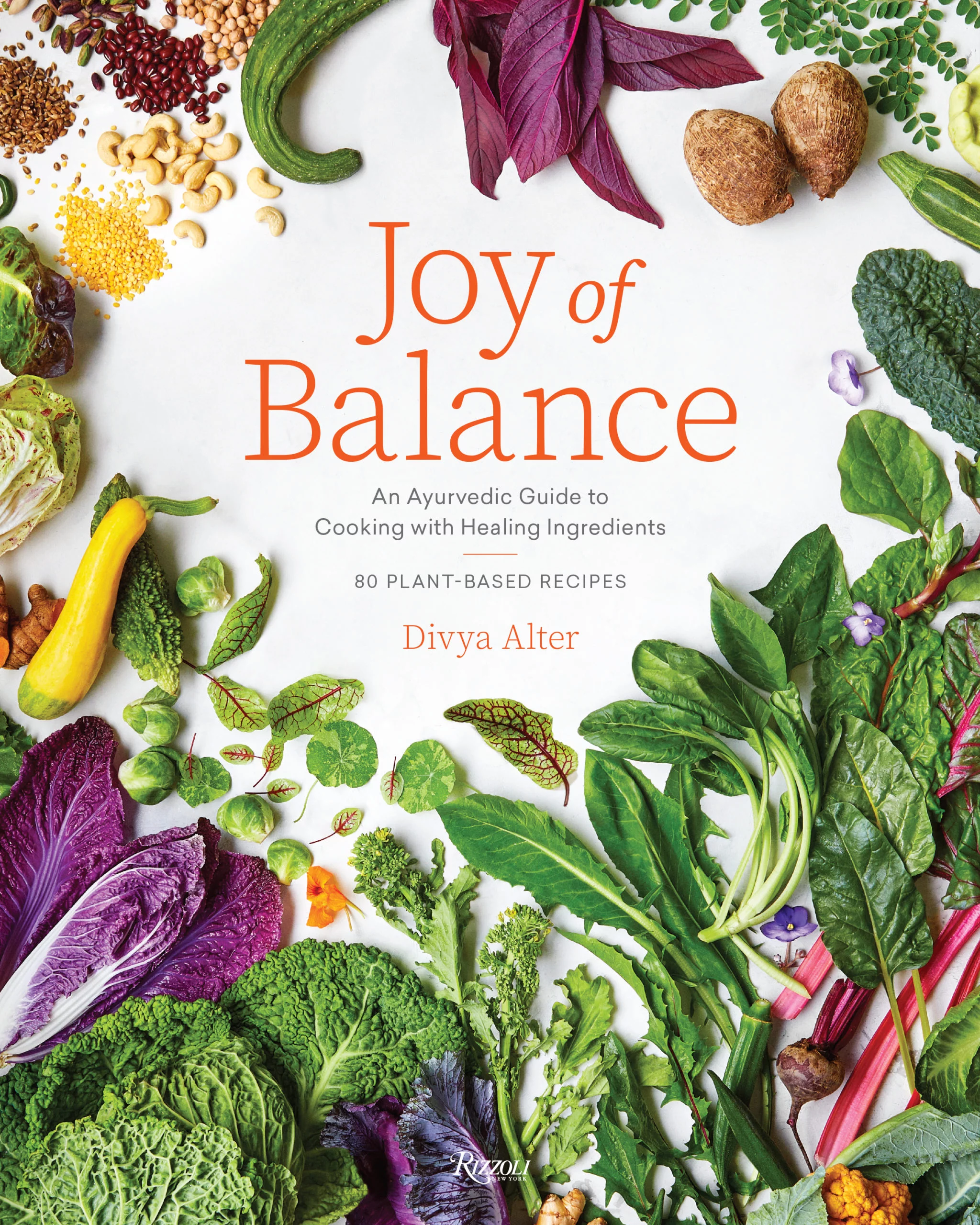
An Ayurvedic Guide to Food Combining
In this article, Divya introduces the essential Ayurvedic principle of food combining. She teaches us that it’s not enough to choose healthy ingredients. True health requires us to select quality ingredients that, when combined in a meal, support strong and balanced digestion.
$39.95–
Add to cart
Joy of Balance, by Divya Alter
Order Divya’s new cookbook now.

An Ayurvedic Guide to Food Combining
In this article, Divya introduces the essential Ayurvedic principle of food combining. She teaches us that it’s not enough to choose healthy ingredients. True health requires us to select quality ingredients that, when combined in a meal, support strong and balanced digestion.
$39.95–
Add to cart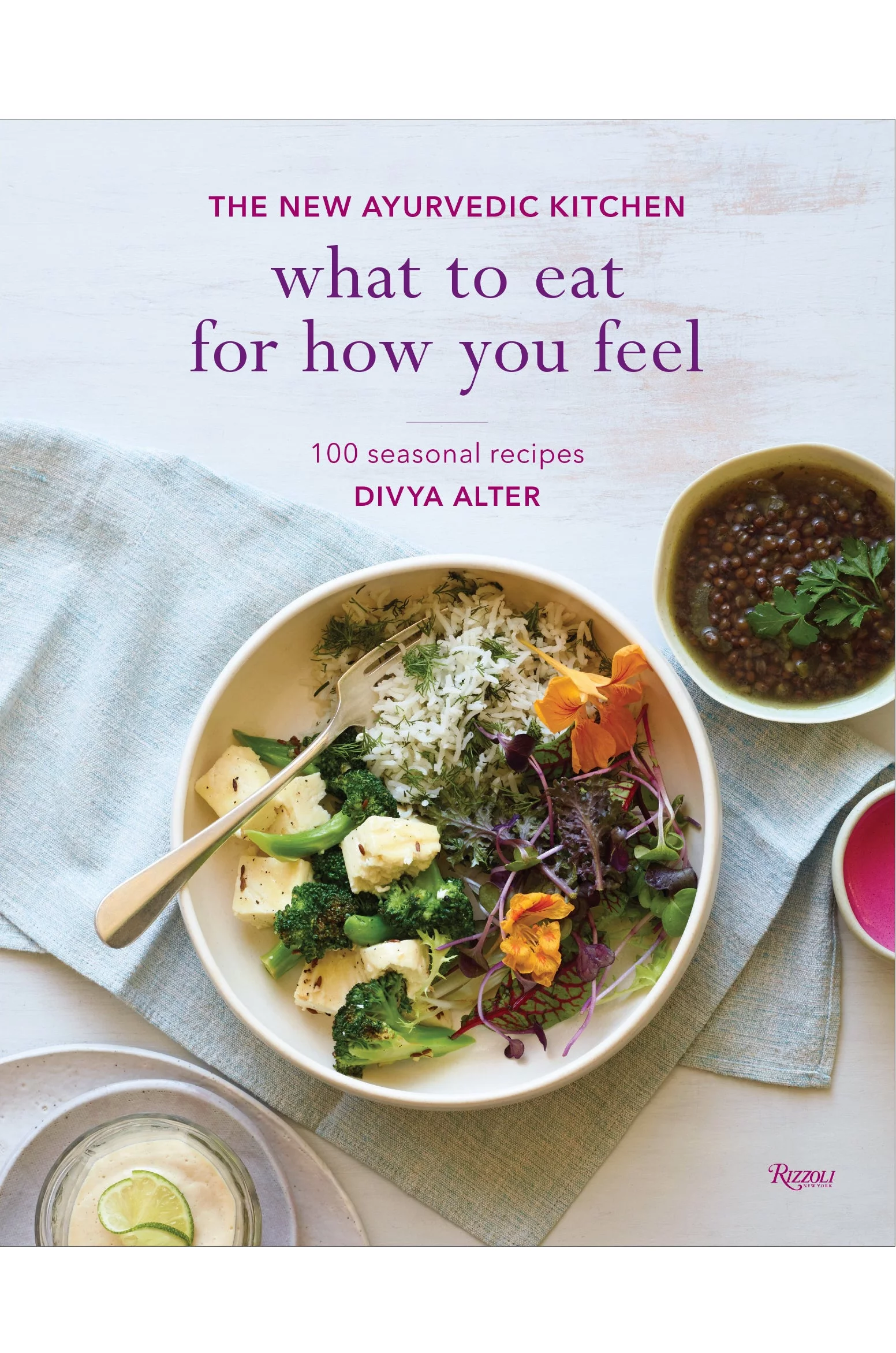
An Ayurvedic Guide to Food Combining
In this article, Divya introduces the essential Ayurvedic principle of food combining. She teaches us that it’s not enough to choose healthy ingredients. True health requires us to select quality ingredients that, when combined in a meal, support strong and balanced digestion.
$39.95–
Add to cart
What to Eat for How You Feel, by Divya Alter
Learn the essential concepts and techniques of Ayurvedic cooking. Featuring 100 seasonal recipes.

An Ayurvedic Guide to Food Combining
In this article, Divya introduces the essential Ayurvedic principle of food combining. She teaches us that it’s not enough to choose healthy ingredients. True health requires us to select quality ingredients that, when combined in a meal, support strong and balanced digestion.
$39.95–
Add to cartMore Articles

Are Raw Foods Good For You?
Here at Divya’s, we’re often asked about Ayurveda’s perspective on raw foods. In this article, we talk about the pros and cons of eating raw dishes and snacks, how to enjoy them safely and when to avoid them altogether.
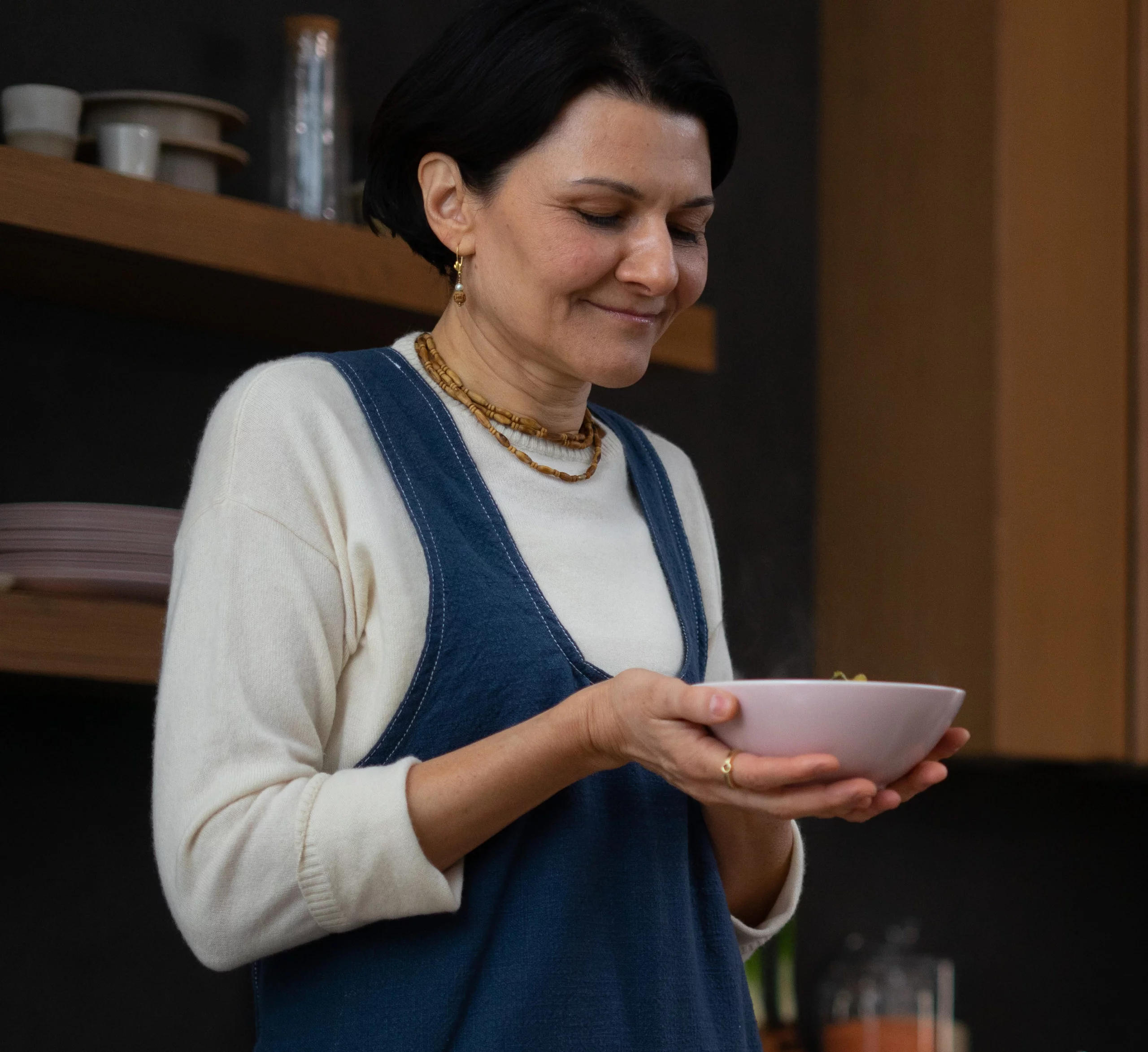
Why Mindful Eating Matters
When was the last time you ate quietly, chewing slowly and truly savoring your food? In this article, Divya covers the importance of mindful eating and why poor eating habits can negatively affect your health.

5 Ayurvedic Tips for Air Travel
Ayurvedic guidelines for staying healthy and balanced before, during and after traveling by plane.










